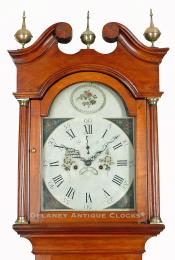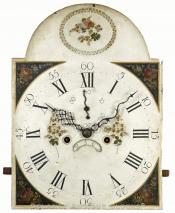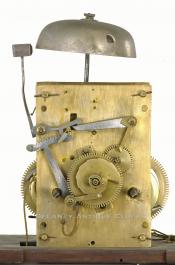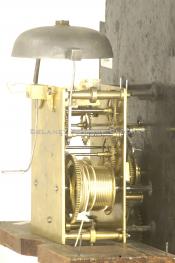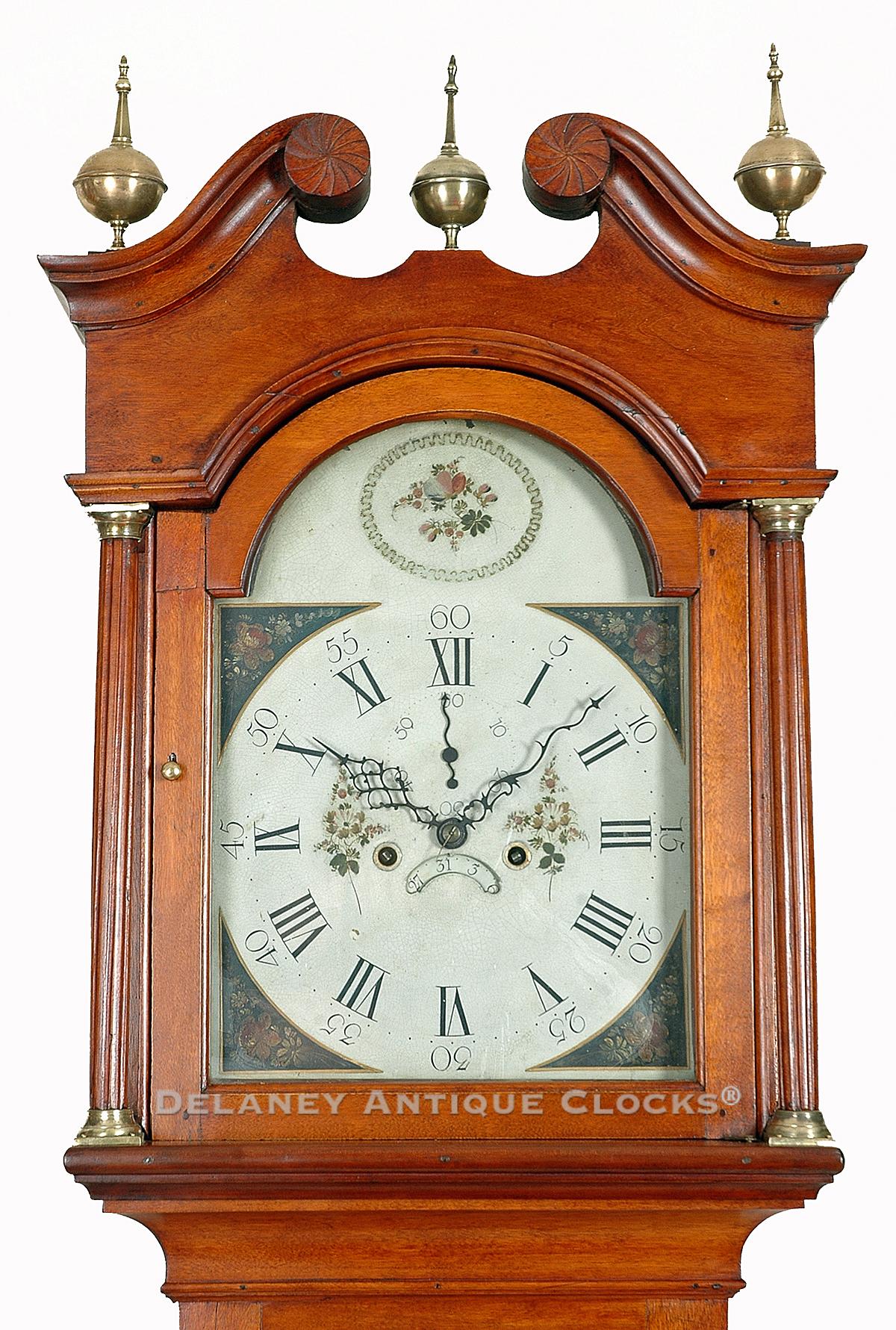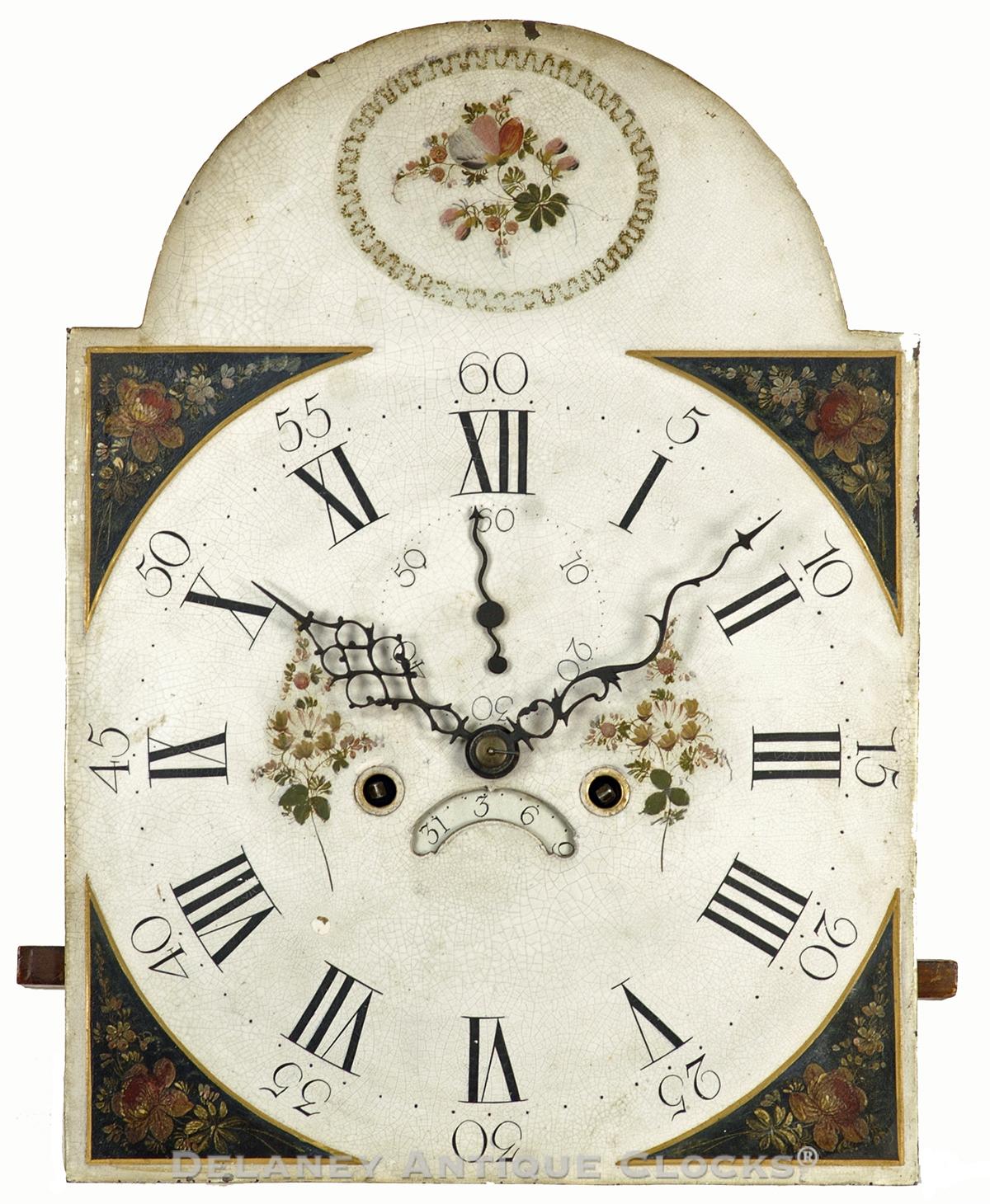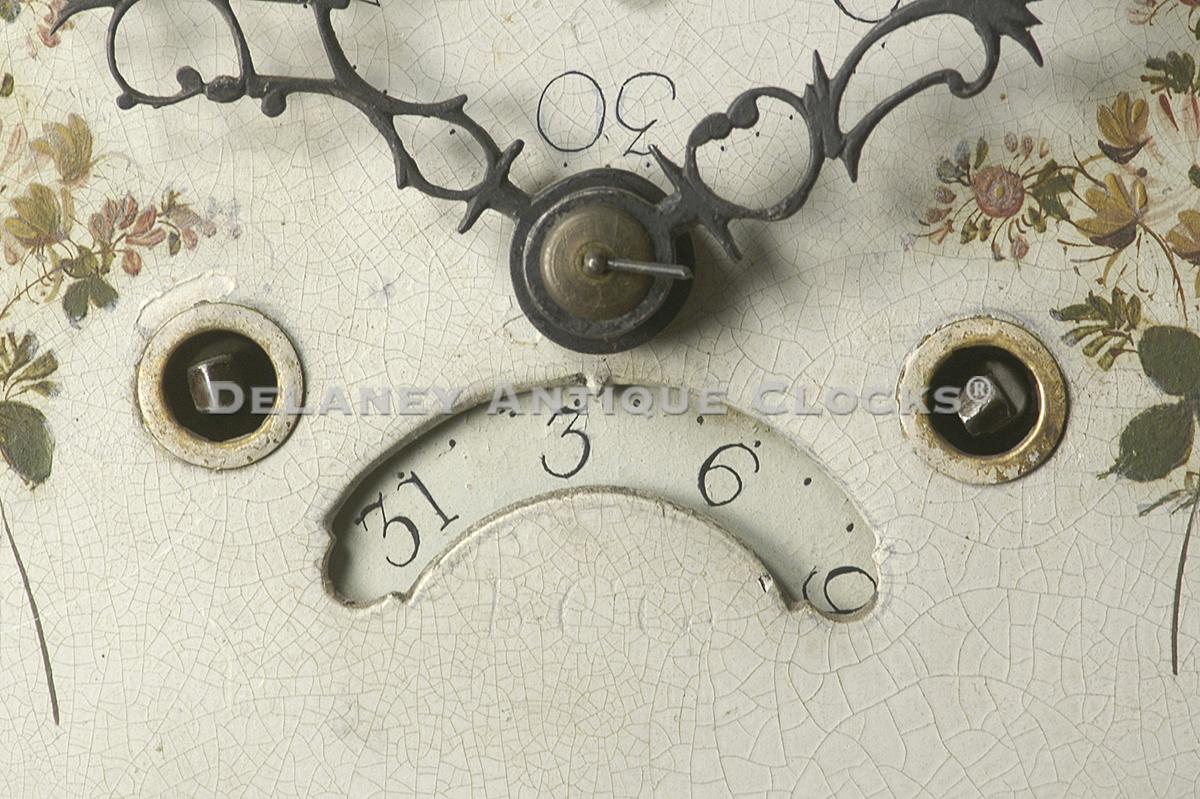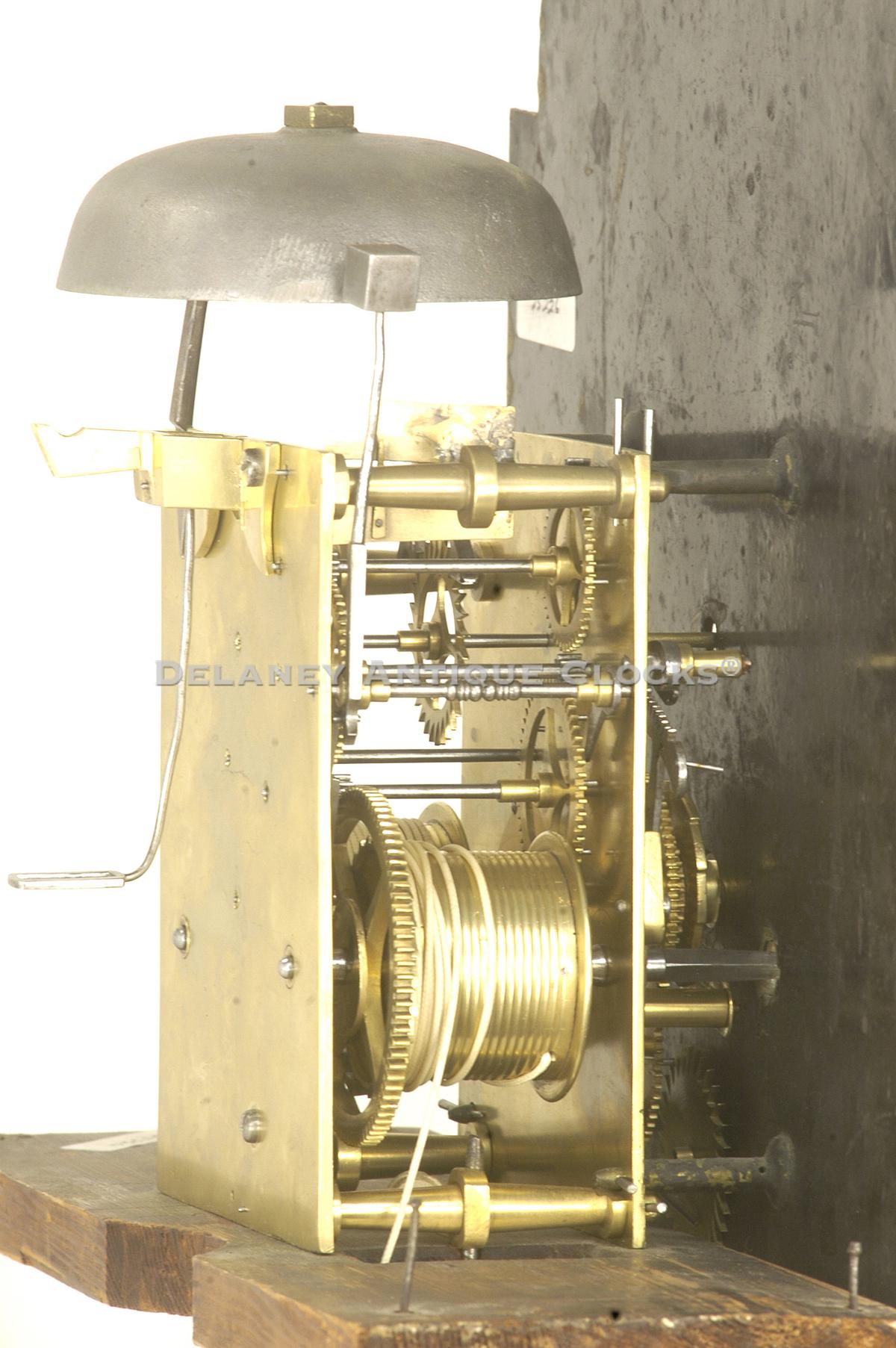Benjamin Clark Gilman of Exeter, New Hampshire. A country case tall clock. RR-12.
This is a good example of a rural New England manufactured tall case clock. The case is constructed in birch and retains a clean surface. This case, like many from the New Hampshire region, was originally tinted with a red wash. This was done to simulate the color of cherry or even mahogany. The current finish accentuates this. This example stands up on an applied bracket base. The waist section centers a tombstone-shaped waist door that is trimmed with a simple molded edge. Through this door, one can access the weights and pendulum. The bonnet features an open arch design. The arches are nicely formed and lighter than what would have been constructed in Concord. These terminate in decoratively formed three-dimensional pinwheels. Three brass ball and spike finials are mounted at the top of the case. They are supported on plinths. Fully turned and fluted hood columns flank the front sides of the arch bonnet door. The columns are mounted in brass capitals and are free-standing. Turned quarter columns are fitted into the back corners. Tombstone-shaped sidelights are positioned on the bonnet sides. These are fitted with glass. The bonnet door is also fitted with glass and opens to access the painted iron dial.
This painted iron dial is of English manufacture. It was made by the Osbourne Manufactory in Birmingham, England. It features a seldom-seen design in that the four spandrel areas are colored with deep blue fields. The traditional floral patterns are painted over this field. This gives this dial a different presentation. A floral pattern is displayed in the arch. This is framed with a floral vine. The time track displays the hours and minutes in a traditional format. A subsidiary seconds dial and calendar display are also present. The Maker's initials are signed in large block letters below the calendar aperture. It reads "B. C. G."
The movement is brass, eight-day duration, and is of good quality. It is weight driven and features a rack and snail strike system and a recoil escapement. It is designed to run for eight days on a full wind and strikes each hour on a bell.
This case measures approximately 7 feet 5 inches tall to the top of the center finial. It was made circa 1800.
Inventory number RR-12.
Benjamin Clark Gilman was born July 8, 1763, and died on October 13, 1835. He was the youngest of eleven children born to Major John and Jane Deane Gilman. In 1788 he married his cousin Mary Thing. Together, they had eight children. He served as a selectman for the town of Exeter for eight years. Frank O. Spinney wrote in an article for the September 1943 magazine Antiques titled, "An Ingenious Yankee Craftsman." In that article, Spinney listed many of Gilman's talents. He was a "silversmith, engraver, watch and clockmaker, builder, hydraulic engineer, merchant, landlord, and instrument maker." In the April 8, 1791, edition of the "New Hampshire Gazetteer," Gilman advertised, "That he carries on clockmaking at his shop in Exeter. As he has done something in the Business for several years past, he now flatters himself of having a thorough knowledge of it - and while he is endeavoring to promote so useful an Art, he requests the particular encouragement of his Friends and Customers." As a hydraulic engineer, Benjamin was involved in constructing several aqueducts. These were built by boring out the center of logs and joining them together to move water. He worked on projects as far away as New London, Connecticut, and the coastal cities of Salem and Boston, Massachusetts, as well as Portsmouth, New Hampshire. As a builder, it is known that he constructed a lighthouse at the entrance of Portsmouth harbor in 1803.
Over the years of being in the business of buying and selling clocks, we have owned over half a dozen tall case clocks made by this maker. The vast majority of them have had painted dials that were signed with his initials just under the calendar. An engraved brass dial clock has also been recorded. In addition to tall clocks, a Massachusetts shelf clock is pictured in Albert Sack's "Fine Points of Furniture." Another shelf clock is pictured in Parsons, "New Hampshire Clocks and Clockmakers." The Currier Museum of Art collection in Manchester, New Hampshire, reportedly owns several silver spoons by Gilman and an engraved watch paper. Several instruments, which include a carriage pedometer, a nocturnal, and an engraved copper plate used to print dials for a surveyor's or mariner's compass, have been recorded.



